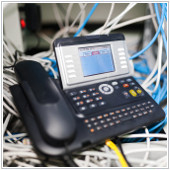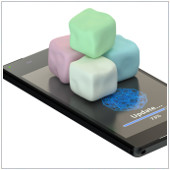You may think that you hate slideshow-based presentations, but in reality you probably hate poorly designed content and overapplication of transition effects. The recent update to Google Slides may not have removed your most dreaded cliche, but they did add some truly innovative interactivity features. Let’s take a closer look at this great new feature. […]
 You may think that you hate slideshow-based presentations, but in reality you probably hate poorly designed content and overapplication of transition effects. The recent update to Google Slides may not have removed your most dreaded cliche, but they did add some truly innovative interactivity features. Let’s take a closer look at this great new feature.
You may think that you hate slideshow-based presentations, but in reality you probably hate poorly designed content and overapplication of transition effects. The recent update to Google Slides may not have removed your most dreaded cliche, but they did add some truly innovative interactivity features. Let’s take a closer look at this great new feature.
What is Google Slides?
Google Slides is a free web-based presentation creator. You can create, edit, store and share slideshows via Google’s Drive client that allows for live collaboration and presenting across the internet. Although Slides is most functional when using online desktops, offline and mobile functionality have made it a formidable competitor to more expensive software from Microsoft.With the most recent update, your mouse cursor even doubles as a presentation laser pointer!
Enabling the Q&A Feature
Earlier this month, Google added an important feature that allows presenters to interact with their audience via their mobile devices. To enable it, click the arrow directly next to the Present button in the upper left corner of the slideshow editor. Next, click the drop-down item marked “Presenter View”. After that you should have two windows open, one that displays your presentation in your original web browser and a smaller “Presenter” that displays a number of options. In the bottom of the "Presenter" screen there should be a Start New button for a Q&A session. If you’re a Google for Education or Google for Business user, you’ll have the option to restrict who can ask questions via the presenter window.Getting the audience involved
After enabling the Q&A tool, a short and easy-to-type link will be shown at the top of every displayed slide. Audience members can navigate to this page in order to submit questions.Audience members who open the page will see a simple screen with an “Ask a question…” dialogue on their mobile device. Loading the site will consider them an anonymous user unless they log into a Google account. If they’re logged in, their picture and name will be associated with any submitted questions. However, self-conscious members have the option to abstain from signing in, or they can check the “ask anonymously” box when submitting their question.
Answering participant questions
After a question has been submitted, it will be displayed in both the presenter window you have open, and the communal window displayed on the audience’s mobile site. This gives them the option to upvote or downvote questions submitted by other viewers. When you see a question you want to address, or has too many upvotes to ignore, you can click the Present button in your presenter window and the question will be displayed alongside the author as a new slide. Clicking Hide will take you back to the last slide to continue the rest of the presentation as normal.If you’re running a presentation with a particularly large number of participants, ask anyone submitting a question to include their email address. The Q&A history can be reviewed under the Tools menu for following up with answers afterwards.
Keeping a presentation interesting and engaging could mean the difference between acquiring a new client and converting your conference room into a place for audience naps. Efficient use of Google Drive software can reinvigorate your collaboration and presentation workflows. Contact us for advice on all things Google in your office!

 Not that long ago, VoIP services were a new and revolutionary concept. Nowadays, internet-based voice communication is commonplace among SMBs, which means it’s time to turn our attention toward improving their security. Without a thorough understanding of what is needed to protect your VoIP systems, you could be vulnerable to cyberattacks. Let’s take a closer look at 5 important tips for protecting your web-based communication devices and services.
Not that long ago, VoIP services were a new and revolutionary concept. Nowadays, internet-based voice communication is commonplace among SMBs, which means it’s time to turn our attention toward improving their security. Without a thorough understanding of what is needed to protect your VoIP systems, you could be vulnerable to cyberattacks. Let’s take a closer look at 5 important tips for protecting your web-based communication devices and services.
 Like all things man-made and otherwise, business continuity plans are not perfect. They too have pitfalls that can result in your business's failure if not accounted for immediately. Don’t blame it all on the IT guy, as often times the way a system is designed can also have loopholes. Here are a few of the reasons why business continuity plans fail.
Like all things man-made and otherwise, business continuity plans are not perfect. They too have pitfalls that can result in your business's failure if not accounted for immediately. Don’t blame it all on the IT guy, as often times the way a system is designed can also have loopholes. Here are a few of the reasons why business continuity plans fail.
 Sorry M&M fans, but the codename Android M doesn’t stand for your favorite chocolate after all. Android 6.0, or Android Marshmallow, as it’s officially called, was more than just enhancing user experience with Android Lollipop. Although it looks a bit similar to Lollipop by retaining the Material design theme, the new features that come with it are apparently smarter and well, sweeter. We have rounded up a list of new features that you can expect when your tablet finally updates to Android 6.0.
Sorry M&M fans, but the codename Android M doesn’t stand for your favorite chocolate after all. Android 6.0, or Android Marshmallow, as it’s officially called, was more than just enhancing user experience with Android Lollipop. Although it looks a bit similar to Lollipop by retaining the Material design theme, the new features that come with it are apparently smarter and well, sweeter. We have rounded up a list of new features that you can expect when your tablet finally updates to Android 6.0.